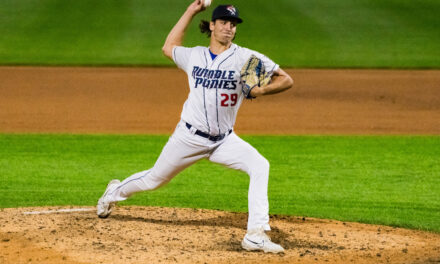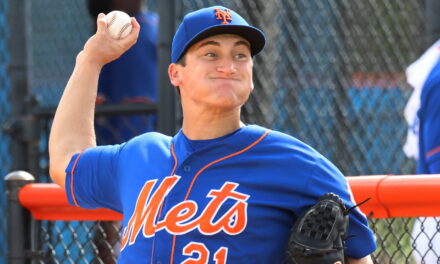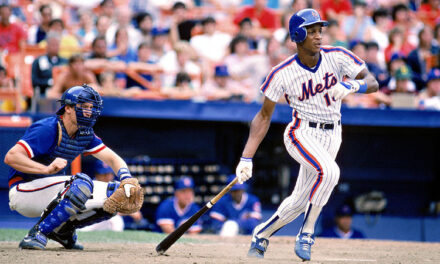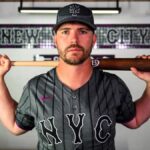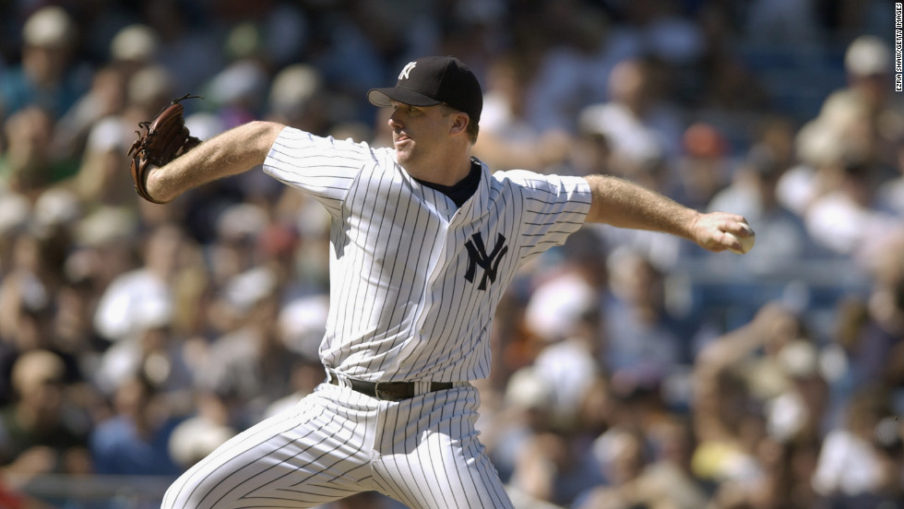
While the Houston Astros were embarking on their first World Series title and only their second appearance in the Fall Classic in their 56-year history in 2017, an Astros broadcaster was all too familiar with the circumstances.
After all, Mike Stanton did appear in every postseason from 1991 to 2002 (except for the strike-shortened year in 1994), and owns the fourth-most appearances in postseason history (53).
As an analyst for the Astros, Stanton gets the chance to break down the game, sharing the expertise he comprised over a successful nineteen-year career in the majors, culminating in three World Series titles.
Stanton, 50, is best remembered for his tenure with the New York Yankees in the late nineties, a part of back-to-back-to-back championships from 1998-00, who, along with Jeff Nelson, were the primary set-up men for Mariano Rivera.
Before the World Series titles and postseason appearances, Stanton was a two-sport athlete in Texas. Stanton played both football and baseball in high school and didn’t pitch at all until his senior year, where he threw only about a dozen innings.
Primarily an outfielder, Stanton was a good athlete, though, looking to secure more scholarship money from Southwestern University, he approached the coach and told him he could pitch.
In 1987, the Atlanta Braves drafted the left-handed Stanton in the thirteenth-round, where he began his career as a starting pitcher.
With limited mileage on his arm, the Braves were looking to get Stanton innings, however, with several starting pitchers ahead of him on the depth charts, they told Stanton his best chance of making it to the majors was in the bullpen.
Stanton impressed out of the pen in ’89 in Double and Triple-A, posting a combined 1.14 ERA over 60 games, with 27 saves and a 9.8 strikeouts-per-nine. The Braves called up the 22-year-old Stanton at the end of August, where he continued to flourish. Stanton posted a 1.50 ERA in 20 games, going seven-for-eight in save opportunities while posting a strikeout-per-nine of 10.1.
Fast forward to the winter of 1996, where Stanton signed a free-agent contract with the New York Yankees, who were fresh off their first championship in 18 years.
After appearing in every postseason since 1991 (minus the strike-shortened season in ’94), Stanton would continue that trend, making the postseason every season with the Yankees until 2002.
Stanton signed with the crosstown Mets in the winter of ’02, spending two seasons in Queens. From 2003-04, Stanton appeared in 133 games with the Mets, posting a 116 ERA+ and holding opposing batters to a .225 average.
In total, Stanton played for nineteen seasons in the majors, with a career 3.92 ERA, 3.75 FIP and 7.2 K/9 over 1,178 games played. That total is second-most among all-time pitchers, behind only former Met reliever, Jesse Orosco (1252).
Stanton’s aforementioned 53 games in the postseason are the fourth-most behind Mariano Rivera, Ryan Madson and Jeff Nelson, pitching to a 2.10 ERA with a 1.150 WHIP during his 18 postseason series.
I had the privilege of speaking with Stanton after the World Series, where we discussed his minor league beginnings with Atlanta, signing with the Yankees and his thoughts on the future of bullpens.

MMO: Who were some of your favorite players growing up?
Mike: I didn’t have a whole lot. To tell you the truth, I didn’t even watch that much baseball.
I didn’t watch sports all that much because, being down here in Houston, we got to be outside kind of all year long. Whatever sport was in session, I was either officially playing, or I was out in the yard playing.
I just didn’t spend a whole lot of time [watching], but if I had to have one player that was my favorite, it was probably Nolan Ryan.
MMO: I read that you were a two-sport athlete in high school, playing football and baseball. An injury in football led you to baseball. Had that not occurred, would you have continued towards football instead of baseball?
Mike: I had a pretty good chance of going to the University of Arkansas playing football and baseball. I did have a knee injury early in my senior year; I was a good football player. I was a good baseball player but I wasn’t a blue-chip athlete.
At the time, they played both of their sports on the old-school astroturf, so they kind of backed off once I had that knee injury. I tore some cartilage in my left knee and I missed a few weeks.
The interesting thing about it was I ended up going to Southwestern University my freshman year, and then my sophomore year I went to Alvin Community College. I was going to have to go back to Alvin for one more semester because I hadn’t gotten my associate’s degree from Alvin, then I was probably going to go to Arkansas again. But I got drafted [by Atlanta], so Arkansas actually missed out on me twice. The second time would’ve been just baseball, though.
MMO: I also read that you didn’t start pitching until later in your teens, is that right?
Mike: My senior year I threw maybe like 12-15 innings. Southwestern University was a national powerhouse, an NAIA school, but it wasn’t a very big school. It still isn’t. We’re talking 1,300 to 1,400 students. A lot of the recruiting was done by the players themselves.
Mike Timlin, who’s a longtime major leaguer, we went to high school together. He was a year older than I was and he went to Southwestern so that was my connection to Southwestern.
I went out there to try out and was in front of the pitching coach and the head coach, but I went there basically as a hitter, as an outfielder. I had a good arm, I swung the bat pretty well but with the idea of trying to get a little more scholarship money. I told them, ‘Hey, I can pitch, too.’
The way the story goes, it had rained really, really hard the day before and we actually took batting practice from the left-field corner because the plate was so wet. We were walking off the field and when I talked to Coach Jim Mallon, I told him I could pitch. He goes, “Well, okay. I’ll keep that in mind.” He goes, “You know what though? I don’t think the bullpen mounds are all that wet, so let’s go over there and throw a little bit.”
I could not have been more unpolished. I mean, I was about as raw as you could possibly be. I don’t think I threw all that hard, but obviously [I’m throwing] from the left side. They signed me kind of as a pitcher/outfielder.
Coach Mallon had a standing rule that if you were one of his top-five pitchers, you didn’t hit. I must’ve been number five because I wasn’t any higher than that and I actually didn’t pitch much that freshman year, but I ended up being just a pitcher. Then my second year I went to Alvin College and got drafted out of Alvin.
MMO: In 1987-88, you started 38 of the 47 games you pitched. When did the Braves have the conversation with you about transitioning to the bullpen, and how did you feel about the switch?
Mike: Nineteen eighty-eight was my first full season of professional baseball, and I went to instructional league that year. That year, I think I might’ve led the whole organization, including the big league club, in innings and strikeouts. But I was a thirteenth-round draft pick, again, I signed professionally with very little pitching experience and I kind of went about my business like a reliever.
There were also several very high first-round left-handed starting pitchers ahead of me, and they kind of told me right after I signed that my fastest track to the big leagues may be through the bullpen. And I was, whatever, you know? Just give me the ball and let me go out there and do my thing.
They sent me to instructional league after the 1988 season. I threw the ball extremely well that year as a starter and they started grooming me as a reliever/closer. It was after the ’88 season. Then I go into spring training in ’89, somewhere between the Durham Bulls – which was the High-A team – and Greenville, South Carolina, – which was the Double-A team. [It was] between those two teams, as a reliever in spring training.
I ended up having a really good year. I then went to Double-A then Triple-A then to the big leagues in 1989.
MMO: Do you believe you could’ve been a successful starting pitcher?
Mike: I do, especially as I got my feet wet. One of the reasons why they allowed me to start, or, they wanted me to start that first year and a half was because I had no pitching experience. I pitched very little my freshman year in college, I actually had an elbow injury my sophomore year and I still got drafted.
I actually think I could’ve been a lot higher draft pick had it not been for the elbow injury. I missed about six weeks. I got back just in time for our state tournament in Texas Junior College Association and was enough to show I was healthy. Then the Braves ended up taking me in the thirteenth-round. I had very little pitching experience, they wanted me to start just to get innings under my belt.
MMO: That makes sense, considering you didn’t have the mileage on your arm.
Mike: Sure, and I think that has a lot to do with the longevity I had in my career.
MMO: That’s a great point, and one I was going to bring up. You have the second most game appearances by a pitcher (1,178) behind only Jesse Orosco. Do you believe that the limited innings that you had during your teenage and college years played a role in your longevity?
Mike: Yeah, I think that. I do a lot of work with amateur baseball now with our youth, and I think with the plague we had a couple of years ago in Major League Baseball, which this has been going on for a long time, but it finally hit Major League Baseball with all of those arms.
I think it was two or three spring training’s ago we had all of those arms 25 and under that had to go down with Tommy John. This is something that had been coming for a long time, and it just happened to get to MLB and impacted baseball in a major way that particular season. I think it has a lot to do with it.
The wear and tear that is put on young pitchers’ arms at the developmental years which is 12 to 17-18, you can even go a little bit older than that if you’d like.
I have players that have played 100 plus games a year, pitchers that are throwing 70-80 innings at 12-13 years old, and I’m on their parents all the time to try to get them to reduce that number, to take care of them. No back-to-back, [monitor] pitch counts and everything like that, and really pays attention to that stuff because they may be fine at 12 or 13-years-old, [but] you may not see the repercussions for another four or five years down the road.
To take this one step further, I think one of the biggest issues is amateur baseball has become big, big business. It’s all about winning, which is not what it should be about. It should first be about the players having fun, and second player development. You know, who really cares if a 13-U team won a tournament? Except for the coaches and the organization, because they can hang a banner on the wall and that allows them to bring in more players.
MMO: You signed with the New York Yankees in the winter of ’96 after they won their first World Series Championship in almost twenty years. When you signed with them, were you thinking the team had a chance to be as special as you guys turned out to be, winning another three (98-99-00) and appearing in four (’01)?
Mike: I knew they were a good team and one of the things I wanted to do was win. They had won in ’96, so I signed in free agency in ’97. And basically, John Wetteland and I traded places; I was with the Texas Rangers, I went to the Yankees and he went to the Rangers.
I knew we were a good team. Did we know we were going to go on a big run like that? Of course not. That’s not realistic. But I knew that we were a team that was going to be good, and they also kind of sold me on the fact that I may be doing some closing, and I wanted to be a closer.
Now it wasn’t something that I had to be, but having the chance with Wetteland going to the Rangers and Mariano not having any closing experience at all, there were a lot of questions whether I may have a chance to close. I never pulled any punches, if someone asked me the question, yeah, I’d want to close.
For me, if you’re a short reliever and you don’t want to close, then why are you doing this? Why would you just want to be a setup guy? Why would you just want to be an offensive lineman when you have the ability to be something else?
Ultimately, I wanted to pitch and I wanted to win. Mariano takes over and does a spectacular job, becomes a Hall of Famer and I’m one of his setup men, and I was fine with that.
MMO: You and Jeff Nelson were the primary setup men for the greatest reliever in baseball history in Mariano Rivera. What are your overall thoughts on being teammates with Mo?
Mike: Aces all the way across the board. Whether it’s what he does [with] charitable contributions and stuff like that. One of the running jokes back in the late nineties was he was always trying to build this church in Panama. Every once in a while he would kind of make his rounds, guys would make donations, and it kind of became the running joke. Well, he ended up building the church and he ends up doing all kinds of charitable work.
As far as a teammate, he was humble, he was a great guy. One of the things I don’t think a lot of people really know about Mariano was he had a great sense of humor. I mean, he had as much fun as any of us. It was just when he got in the clubhouse and around the media he got maybe at the beginning a little shy, it’s just not a situation he had been exposed to.
And then on the field, his numbers speak for themselves. I don’t think it’s even arguable, he’s the best reliever to ever live.
MMO: You appeared in the postseason every year from 1991-02 – except the strike-shortened season in ’94. You’re fourth all-time in appearances with 53, and you had tremendous success with a 2.10 ERA. How did you stay so composed during the most heightened of times, what would you do to mentally prepare?
Mike: I think part of it, and a large portion of my career, I was someone that had to continue to pull back on the reigns. Meaning, I was highly energetic – I didn’t show it on the mound, but a highly emotional guy.
A lot of times I was trying to calm down. The thing is every situation – every series that we went through – was different. There were times that maybe I did have to try and kick myself in the rear end to try and get up for a situation. And then the very next series, okay, now I’m too amped up.
Really, I would have to say the biggest thing that I tried to do was belittle the situation. What I mean by that is make a pitch. My job was to make a pitch and get a dude out, that’s it. It doesn’t matter if it’s spring training in Port St. Lucie or Tampa or it’s Game Seven of the World Series at Yankee Stadium; my job is still to execute a pitch and get a hitter out.
That worked for me. It took me a little while to figure that out, but that worked for me. Being a max-effort pitcher, there were times that I got a little bit out of control, but for the most part, I was able to stay composed to do my job and execute that pitch.
MMO: So a lot of it was mental for you? Just to help you manage the situations?
Mike: It’s all mental. I’ve always said, and I use this statement to this day, we were all starting pitchers. We could all start, at some point, everyone was a starter. To be a good reliever, especially short relief, everybody can’t do that. Every starting pitcher can’t go to the bullpen and be good. It’s a select few that have the mindset and the mental toughness to go in and do that. You don’t have a chance to go in and ease your way into an outing.
Tom Glavine, as great as he was, go back and look at the numbers, he was horrendous in the first inning. He ends up making the Hall of Fame, but as a reliever, he wouldn’t have made it for two years just because one of the things you have to be able to do is go in there, throw strikes, and get guys out now.
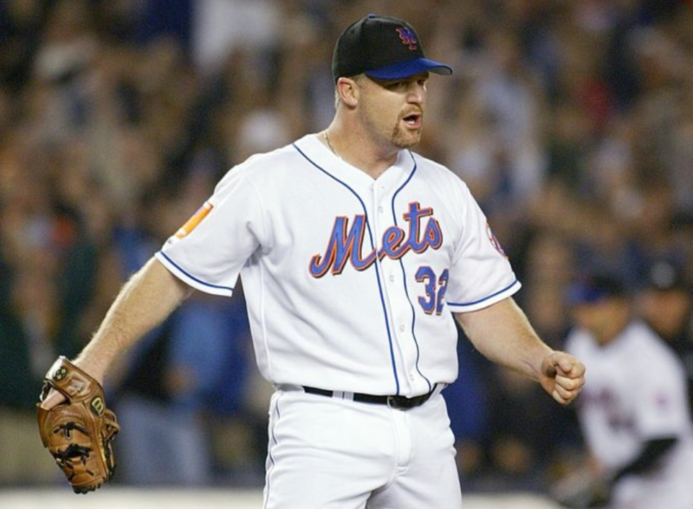
MMO: How would you describe your time with the Mets from 2003-04?
Mike: I had a lot of fun with the Mets, I did. Two-thousand three was a little bit of a letdown only because we went into the season with a lot of expectations. We had a very veteran club, we had a lot of players on that team that people knew and we just simply didn’t play well.
As far as the organization and playing at Shea, I liked it. I had a good time. I had fun with the guys that were in the Mets organization. It was unfortunate that we weren’t able to live up to those expectations because both years we were kind of lousy.
MMO: You got to witness a young David Wright when he was brought up in 2004. What are your memories of him early on?
Mike: The first time that I saw David Wright was on the backfield in Port St Lucie, and I’m throwing batting practice. Okay, it’s a controlled situation, he’s a young guy, a righty [batter] and I’m a left-handed pitcher and I’m out there. I’m not throwing overly hard, I’m just getting my work in. It’s not a game situation.
I do tell him what’s coming, but I throw him a pretty good two-seam fastball, kind of down and away, and he just crushes it to right field. And I’m like, Wow, okay, let’s see what he can do with this. Next pitch, fastball in, and he turns on it and crushes it to left field.
That was my first experience like wow, this kid has a real idea of what he is doing at the plate. And he ends up being Captain America, he ends up being the face of that franchise for a long, long time.
I saw the athletic ability, but also the makeup for him to put up with that. There were some pretty lean years that he had to go through and there were a lot of questions that were asked that he really had no business answering, about the stuff going on with the Wilpons. But what did he do? He stood there and answered them to the best of his ability he could and I think that he’s arguably one of the biggest names to ever wear a Mets uniform.
I know there are more superstar-type players, but you look at what he meant to that organization, especially through those lean years. I think he’s got to be right up there with them.
MMO: Can you talk a bit about your transition into broadcasting?
Mike: I always had a good rapport with the media and I thought that was something that I may enjoy doing. I didn’t know if I wanted to go straight back into coaching, because even when I was done playing, my kids were still relatively young.
It started with MLB Network Radio on Sirius XM and I was a postseason analyst. I went on like once a week during the playoffs, has to be six or seven years ago now. They liked what they heard enough that they called and said, “Would you like to give this a try?” And that’s how I got into radio. It became something that I’ve done quite a bit over the years.
Then [I got my next opportunity] through a friend of mine, Chad Fox. My last spring training was in 2009 with the Cubs, and Chad was with that team also. We were kind of the old guys, both Texans and we went to lunch and hung out.
Through a person that he knew, a lady by the name of Patti Smith who was a long-time television personality down here in Houston, they were looking for potentially another pre and post-game analyst, and she had asked Chad if he had any interest. He said no, but he got me in touch with Patti. Patti got me in touch with [someone] who at that time was an executive producer at Fox who was the team that was covering the Astros, his name is Murphy Brown. We had lunch and it started very slow. I think the first year I did only eight games, the second year I did even less because Fox was going to be no more.
Then CSN happened and I became one of their main guys. It’s just grown and grown from there to last year I end up doing most of the games pre and post. I think I did about ten games in the booth as the color for the television broadcast. That’s ultimately what I think I want to do is cover a team on a daily basis in the television booth.
MMO: Would you ever consider returning to the game as a coach?
Mike: I have considered it and even talked about it with some people. Possibly, I’m not going to say absolutely not. At one point, I didn’t want to do it because of the travel and my kids and I’ve been away from my family for so long. Now my baby, my daughter, is getting married in January, so it’s a possibility. It would have to be the right situation. But yeah, I wouldn’t exclude it ever, because you just never know.
I still coach, I actually coach a lot, at the amateur level. Whenever I’m not covering the Astros and I’m not on the radio for MLB Network Radio, I’m coaching our youth. I’m pitching coach/hitting coach, whatever I can to help develop not just young baseball players, but young men.
I really take pride in the fact that I’m not just trying to develop somebody that’s got a good swing or good delivery, I want to have an effect on their lives overall. Maybe fifteen-twenty percent of the conversations I have with the players I work with, it’s actually not about baseball, it’s about life. I try to do everything I can to help them get to the next level if they have the ability to play in college.
I’ve done some college scouting recruiting, I have a service that I’ve been a part of for a while. It’s really a passion of mine that I didn’t know really, to tell you the truth. It’s turned into a passion of mine, which is coaching.
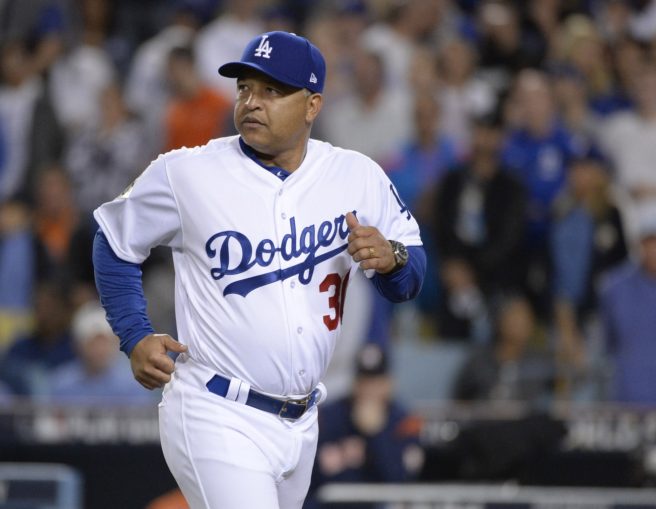
MMO: What’s your overall take on the specialization that bullpens have taken on over the last several years in baseball?
Mike: Major League Baseball goes in cycles, there’s an ebb and flow to everything. It’s a copycat league. When someone makes something successful, and you know what Kansas City did a couple of years ago with that great bullpen that they had, everyone’s trying to mimic that.
What I think we’re seeing, in my opinion, is we’ve gone overboard with it, which is kind of human nature. You’ve got a good bullpen, let’s get them in there as much as we can. In the regular season that doesn’t work.
Starting in Game Two of the World Series this year, I got up on my soapbox about how Dave Roberts was overusing his bullpen. How in Game Two Rich Hill goes four innings and the Astros only have one hit, yeah he had walked a few guys but the Astros weren’t picking up the ball at all. But their game plan was he was going to go through the lineup twice, and then they were going to get him out of there.
What I started saying was a couple of things. First, by the end of the Series, your bullpen isn’t going to have the same stuff because of the amount of work they’re asked to be doing. Second, it doesn’t matter how good your stuff is, these guys have at-bats against that bullpen four or five or six times. All of a sudden, their stuff isn’t as good just because the hitters have an idea of where the release point is, the spin on the breaking ball, and what they’re trying to do.
I can tell you I used to hate pitching in a game one of a four-game series in the regular season because I knew I was going to pitch in at least two, maybe all three of the next ones, and I was facing the same cats. I think that’s what happened with the bullpen of the Dodgers; they suffered from overexposure. Even as good as they were, you get that many at-bats in a short period of time, the stuff just isn’t as spectacular.
I think we’ve even seen some teams do this. Not to that extent, obviously, in the playoffs, you’re talking about a small sample size, but we’ve seen it happen at the big league level also. I think over time we’re going to see a resurgence of the heavy lifting being done by the starting pitching. Especially in the regular season, you simply don’t have enough arms in your bullpen to cover 10-11-12 outs a night. You just can’t do it.
MMO: There was a report out a few weeks back about the Mets potentially limiting anyone not named Syndergaard and deGrom to just two times through the batting order.
Mike: I’ve heard that. We talked about that on the radio just a couple of days ago when that came out. My point was, it puts a lot of pressure on Syndergaard and deGrom. They have to go out there and they have to go seven innings. Well nobody goes seven innings, not on average.
You look at Max Scherzer, who led the National League in innings, he was 6.2 innings on average. That’s still seven outs that have to be covered on average, that’s a lot of outs. And for seven outs, you’re looking at probably four pitchers, if you’re going to do it on a daily basis.
MMO: So, do you believe that organizations will look to make a more conscious effort of trying to build up starters to endure a higher innings workload?
Mike: Where it looks like this cycle is going right now is, Major League Baseball is trying to develop multi-inning relievers. But in my opinion, we’re going to get back to [starters going deeper]. Now, what’s the period of time? I don’t know. There’s going to have to be more onus on starting pitchers going deeper just simply because you don’t have enough arms in the pen to cover that many outs on a nightly basis when you’re talking about a 162-game season.
MMO: Thank you very much for your time today, Mr. Stanton. It was great to speak with you about your career.
Mike: Thanks so much. I appreciate it!
Follow Mike Stanton on Twitter, @MikeStanton29


